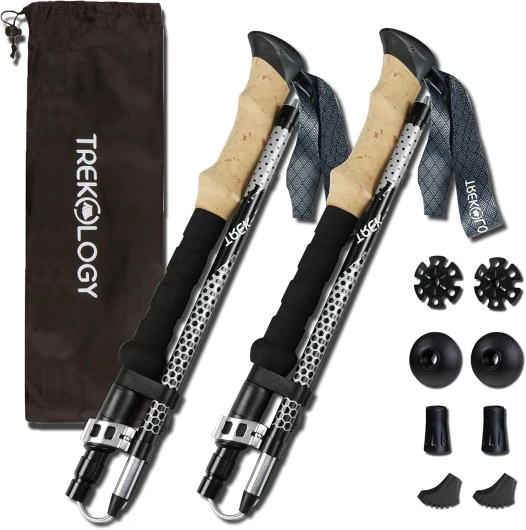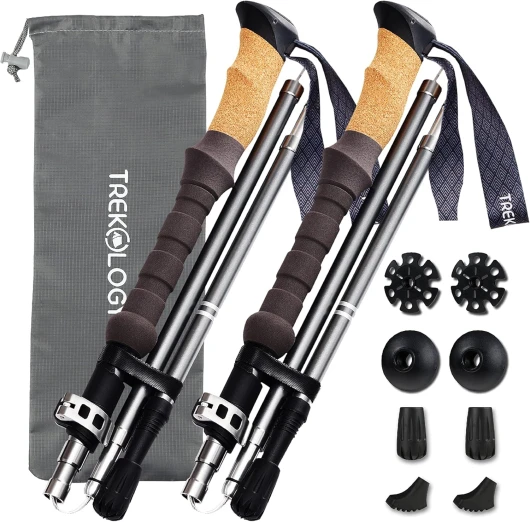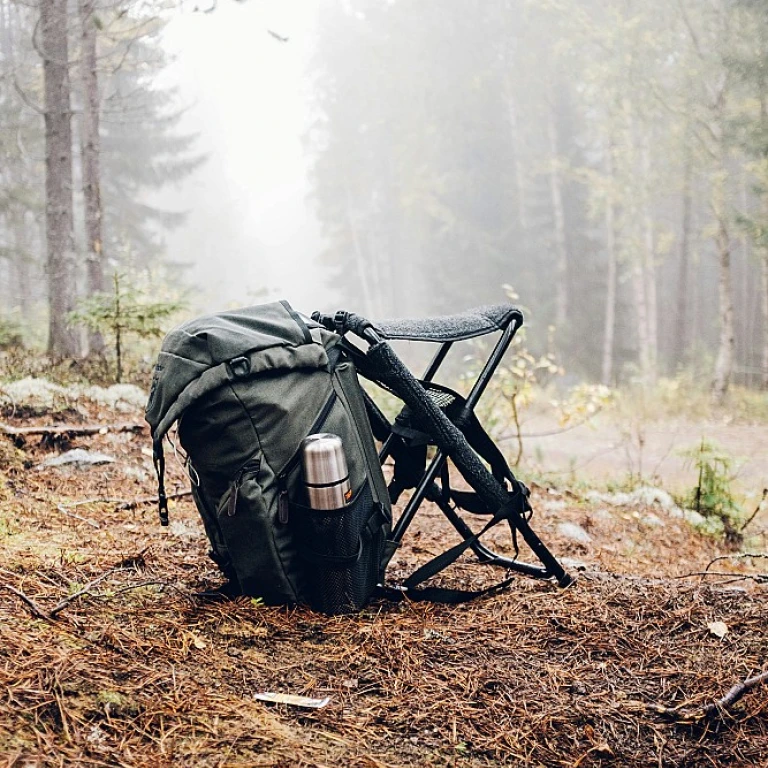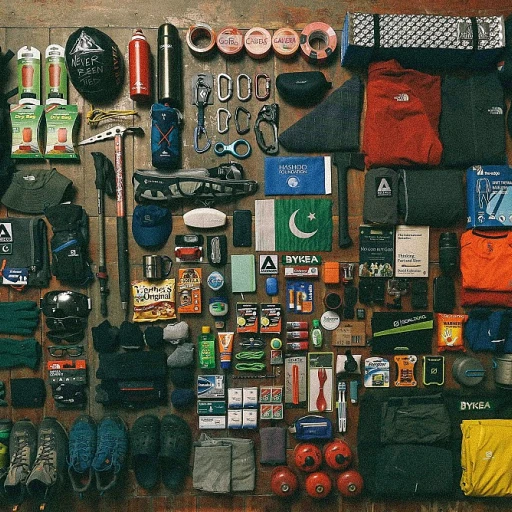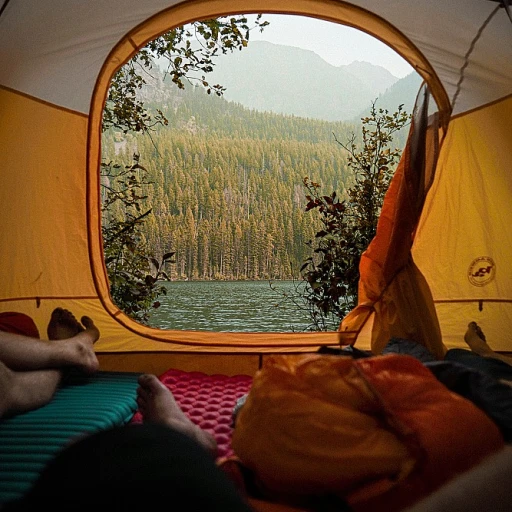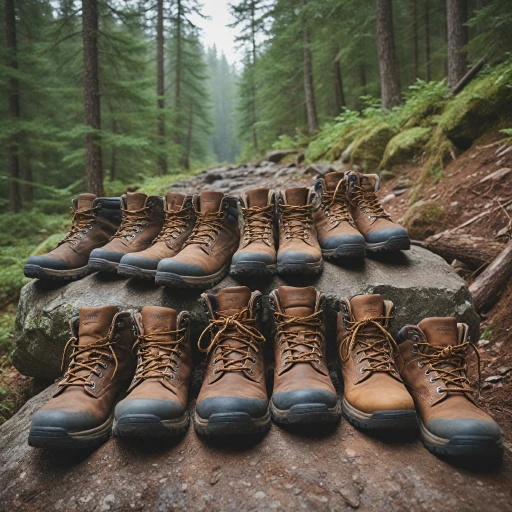
Understanding the Role of Trekking Poles in Hunting
The Critical Role of Trekking Poles in Your Hunting Adventures
As you embark on hunting trips, the best trekking poles can become indispensable tools in your gear collection, offering support and stability across challenging terrains. Whether you're traversing through rocky paths, climbing steep inclines, or navigating densely wooded areas, trekking poles provide the extra balance needed to maintain focus and precision. By distributing weight more evenly, these poles help alleviate joint stress, particularly on the knees and back, making long hunts less taxing on the body.
Trekking poles are not only about support; they serve as extensions of your vision, allowing you to probe uncertain ground for stability, prevent potential slips, and identify obstacles hidden under leaves or snow. In icy conditions, snow baskets can be affixed to the poles, enhancing your footing on slippery surfaces. Moreover, trekking poles are advantageous when carrying heavy packs. They improve posture and reduce fatigue, enabling hunters to preserve energy for tracking and taking accurate shots.
When considering materials, carbon fiber and aluminum are popular choices. Each has its pros and cons: carbon is lighter and provides better shock absorption, while aluminum is renowned for its robustness and lower price. For those who prioritize lightness and durability, brands like Leki and Black Diamond offer lightweight yet sturdy options. With the possibility of adjustable length and collapsible designs, trekking poles can be tailored to individual preferences, ensuring maximum efficiency during hunts.
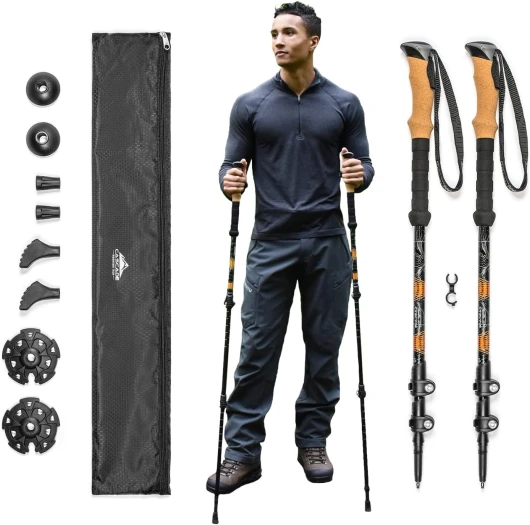
- + Lightweight and easy to carry
- + Durable aircraft-grade aluminum construction
- + Extended grip for comfortable handling
- + Quick lock mechanism for easy adjustments
- + Includes tip kit for versatility
Choosing the Right Trekking Poles for Hunting
Identifying Your Needs and Preferences
When it comes to choosing the right trekking poles for hunting, understanding your specific needs and preferences plays a crucial role. Trekking poles come in different materials such as carbon and aluminum, with each offering distinct advantages. Carbon fiber poles are lightweight and suitable for long distances, making them ideal if weight is a primary concern. Conversely, aluminum poles are more durable and can handle heavier loads, which might be beneficial in rough terrains.Consider the Terrain
It's vital to consider the type of terrain where you'll be hunting. For instance, black diamond trekking poles are known for their versatility in various environments. Snow baskets can be added to your walking stick for snow-covered landscapes, ensuring stability in icy conditions. If your hunting grounds have rocky pathways, selecting poles with a diamond or tungsten tip can provide the necessary traction.Adjustability and Features
Adjustability is another key feature to look for. Poles that can be easily adjusted to your specific height, like the leki and msr dynalock models, add comfort and effectiveness to your hunting experience. Collapsed length is also an important factor if you need to pack them away easily. Quick-lock systems ensure your poles remain secure during a rapid change of terrain or unexpected maneuvering.Price vs. Quality
While the regular price of trekking poles varies widely, it's essential to balance quality and budget. Brands like cascade mountain offer affordable options without compromising on durability and performance. It's recommended to read messages from seasoned hunters, reviews, and testimonials to gauge the real-life efficacy of the poles in hunting scenarios.Integrating with Other Gear
Finally, consider how the trekking poles will fit with your overall hunting gear. Poles that can be joined easily to your pack are convenient. They allow quick access when needed and prevent any delays during the hunt. Exploring additional gear such as hiking poles that double as stabilizing tools can offer extra assurance during challenging hunts. For a deeper dive into how gear integration can enhance your experience, check the discussion on walking staff advantages and apply those principles to your poles too.Integrating Trekking Poles with Your Hunting Gear
Boosting Your Hunting Gear Setup with Trekking Poles
Integrating trekking poles into your hunting gear can significantly enhance your experience in the great outdoors. These poles, offering versatility and stability, can be as crucial as your trusty hunting boots. As the demands of a hunting trip vary, so should your equipment.
Consider the weight and material of the poles in connection with your existing gear. Carbon fiber poles offer a lightweight option, perfect for lengthy hunts where every ounce counts. Their reduced weight contributes to less fatigue, enabling you to carry on with a longer, more tireless trek. On the other hand, aluminum poles, like those from renowned brands such as Leki and Black Diamond, provide robust durability. They may weigh a bit more than carbon poles but often come at a more accessible price. Each material has its merits, depending on your intended use and personal preference.
The collapsed length of your trekking poles should also complement your gear setup. With various length options available, you can ensure they fit seamlessly within your pack. Lightweight packs from brands like Gossamer Gear are designed to accommodate poles with varying lengths without compromising on space. It's essential to consider how easily they can be stowed and retrieved when urgency calls for quick movement.
Don't forget about additional accessories that should be part of your equipment setup. Snow baskets for the poles are an excellent accessory when hunting in snowy terrains. These additions enable better maneuvering through soft landscapes, maximizing your trekking pole's utility across numerous settings.
While you evaluate the compatibility of trekking poles with your hunting gear, it's wise to keep an open mind and continuously seek insights from fellow hunters who have incorporated these poles into their repertoire. Their experiences often deliver invaluable messages about what works best in the field.
A harmonious integration of your trekking poles into your hunting gear setup can redefine your outdoor journeys, infusing them with enhanced stability and endurance. For further insights on how to ensure your outdoor equipment is aligned with your adventures, consider exploring selecting the right hiking boots.
Techniques for Using Trekking Poles in Varied Terrains
Mastering Terrain for Enhanced Efficiency
When it comes to using trekking poles effectively in varied terrains, understanding the nuances of each landscape is vital. Whether you're navigating the steep cascade mountains or trudging through the snow-capped trails, your trekking poles can be your best allies. To ensure you utilize them to their fullest, consider these techniques.- Adjusting Pole Length: Adapt the poles to the terrain. On ascents, shorten the poles to maintain balance without compromising on support. Conversely, during descents, extending the length helps in protecting your knees and offers stability.
- Using Snow Baskets: For terrains filled with deep snow, affixing snow baskets to your trekking poles, like those available from brands like Leki or Black Diamond, can prevent them from sinking too deep. It’s an essential piece of gear if you’re embarking on snowy mountain trails.
- Proper Gripping Techniques: Gripping techniques vary greatly depending on the terrain. In rocky or uneven landscapes, opt for a firm grip to maneuver deftly, while in flatter areas, a relaxed grip paired with a steady rhythm will suffice, significantly reducing energy expenditure.
- Choosing the Right Material: Carbon fiber poles, though lightweight, can be slightly pricier. However, they provide excellent energy efficiency and durability in rough terrains. Conversely, aluminum poles, while heavier, offer resilient strength and are often more cost-effective.
Maintaining Your Trekking Poles for Longevity
Prolonging the Life of Your Trekking Companions
Ensuring the longevity of your trekking poles is essential for maintaining their performance and reliability during hunting expeditions. With the various options available, from carbon to aluminum, black diamond to cascade mountain, each material and brand requires specific care methods.
- Regular Cleaning: After every hunting trip, especially through muddy or dusty terrains, clean the poles thoroughly. Use a mild soap and water solution to remove dirt and debris from all components, focusing on moving parts and joints.
- Inspection of Components: Regularly check for any signs of wear on the baskets, tips, and joints. Snow baskets and other attachable gear, like those provided by brands such as Leki, should be inspected for damage.
- Proper Storage: When poles are not in use, collapse them to their shortest length, and store them in a dry, cool place to prevent corrosion. Consider using a protective carrying pack to avoid accidental damage.
- Periodic Maintenance: Apply a small amount of lubricant to the locking mechanisms and joints to maintain smooth operation. If your poles have a carbon fiber construction, ensure that any scratches are inspected to prevent further damage.
- Component Replacement: Over time, certain parts may wear out. For instance, replace worn-out baskets or tips with new ones available from both well-known brands such as Gossamer Gear and innovative startups like Muley Freak.
By implementing these maintenance tasks, you'll ensure that your trekking poles remain a reliable part of your hunting gear, whether they're the lightweight, high-end carbon fiber models or the durable yet cost-effective aluminum versions. Keep an eye on the weight and the collapsed length of your poles to match your carrying needs, especially during extended excursions.

